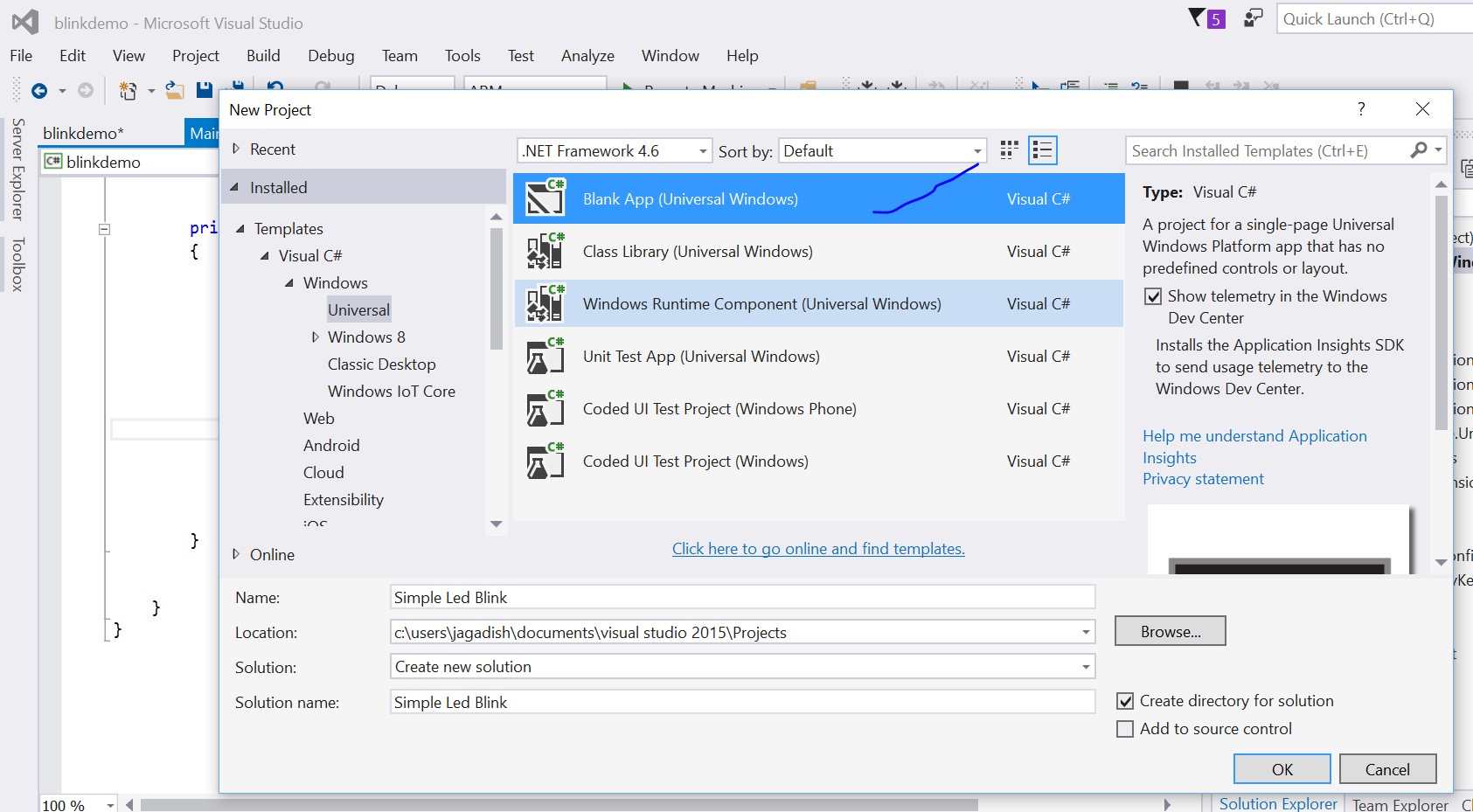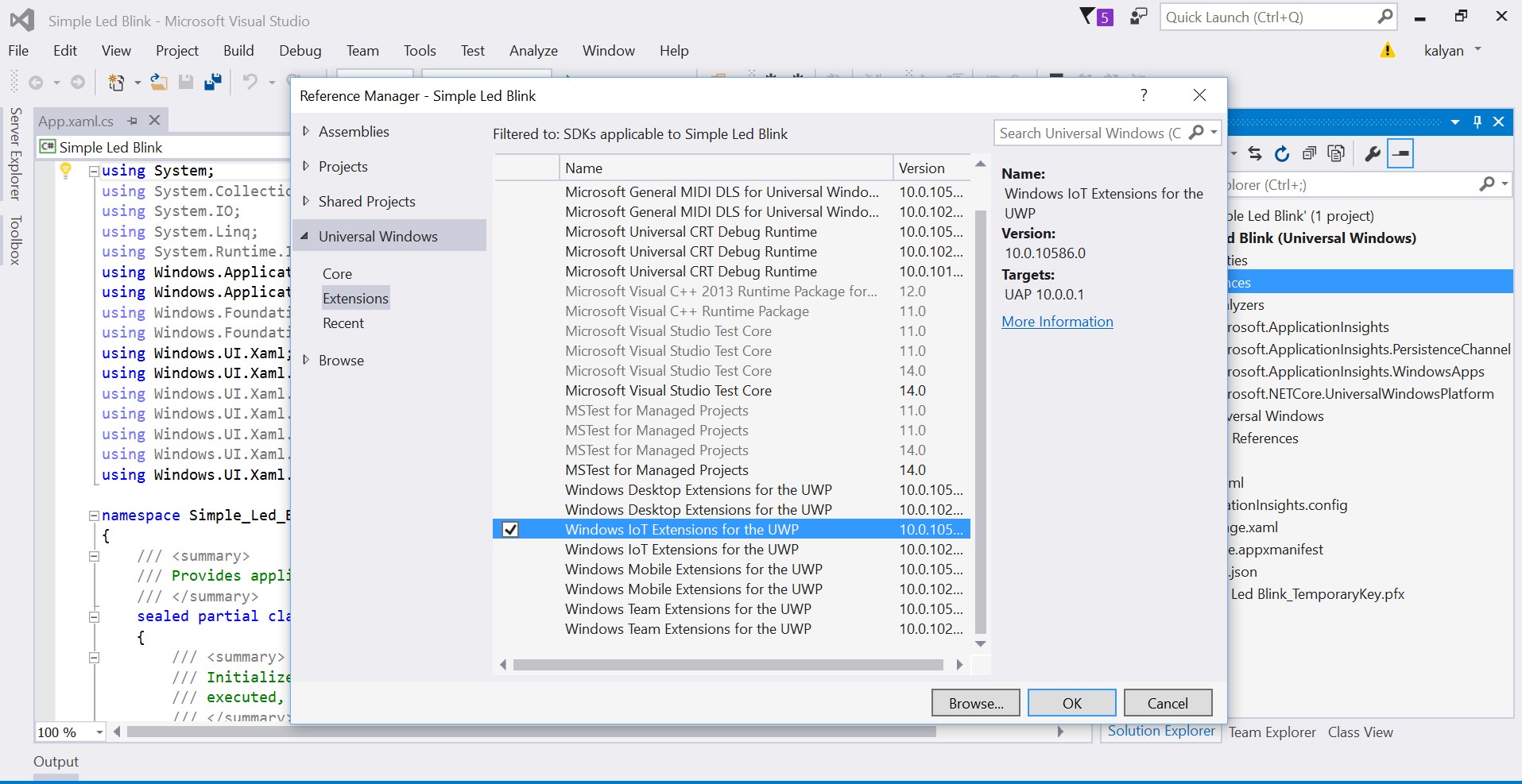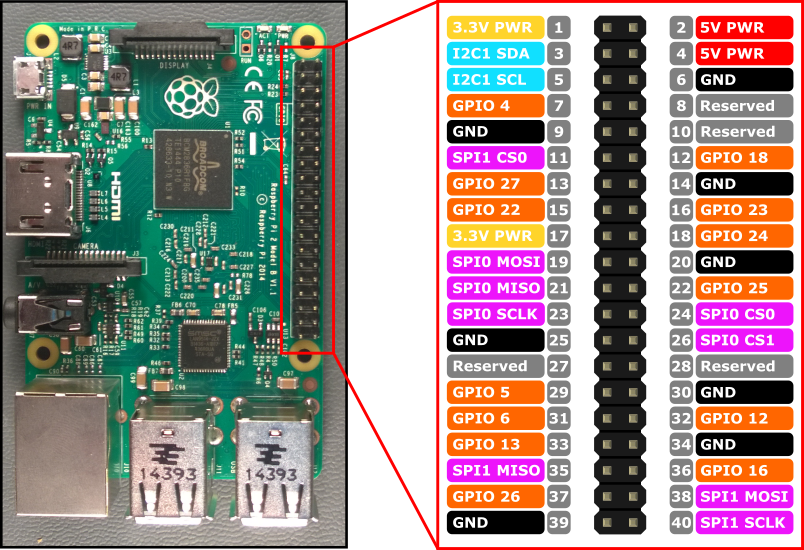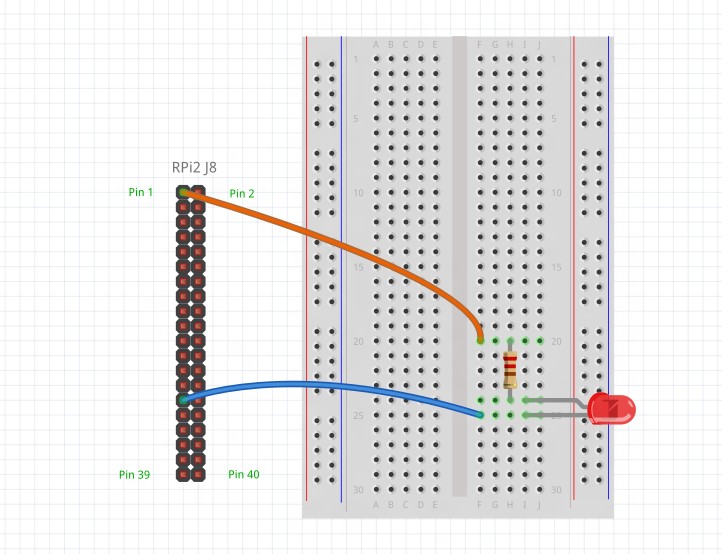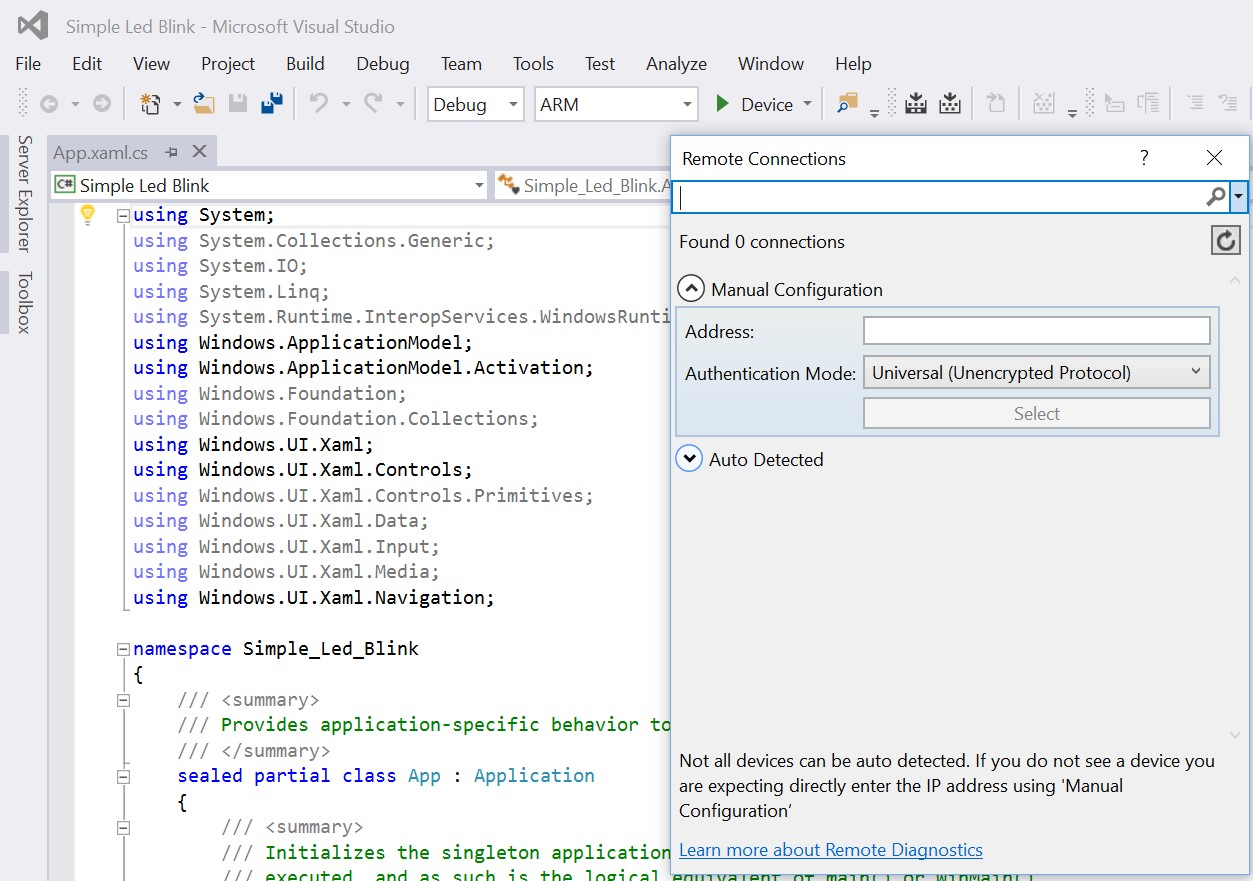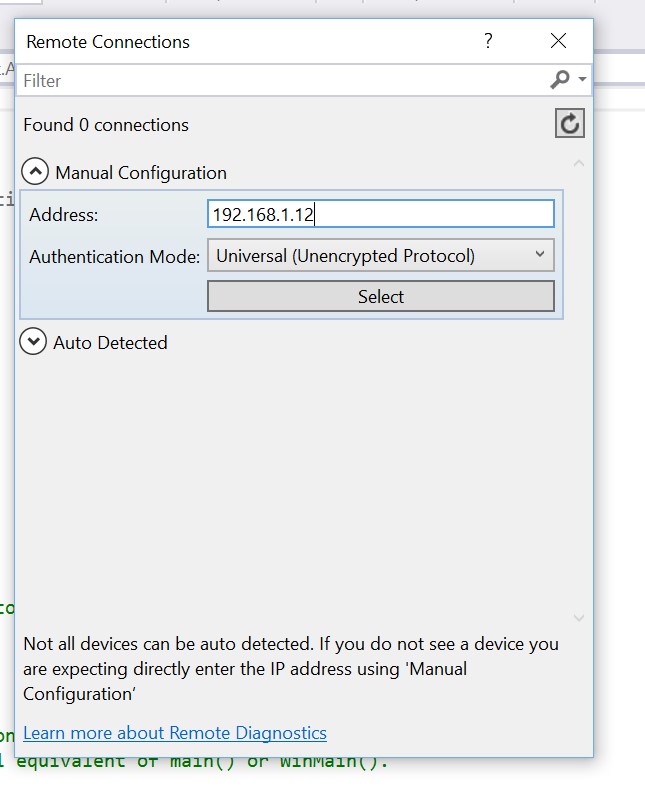IoT: Simple LED Blink example
This article helps you to work with a simple experiment of connecting LED lights with Raspberry Pi device (device only with Windows 10 IoT Core OS)
Requirements:
- Raspberry Pi 2/3 with Windows 10 IoT Core OS connected to internet
- Laptop or PC with Windows 10 OS connected to internet
- Visual Studio 2015 installed on your laptop or PC
- Bread Board
- LED Light
- Resistor
Follow the below steps:
**Step – 01: **Select File -> Create new project -> Name it "Simple Led Blink"
** **
**Step – 02: **Right click on the selection and add reference. Select Windows IoT Extention for the UWP and click ok.
**Step – 03: **Open MainPage.xaml and add the following for UI
<Grid Background="Wheat">
<StackPanel HorizontalAlignment="Center" VerticalAlignment="Center">
<Ellipse x:Name="LED" Fill="LightGray" Stroke="White" Width="100" Height="100" Margin="10"/>
<TextBlock x:Name="DelayText" Text="500ms" Margin="10" TextAlignment="Center" FontSize="26.667" />
<TextBlock x:Name="GpioStatus" Text="Waiting to initialize GPIO..." Margin="10,50,10,10" TextAlignment="Center" FontSize="26.667" />
</StackPanel>
</Grid>
**Step – 04: **Open the MainPage.xaml.cs add the following in the cs file.
private const int LED_PIN =5;
private GpioPin pin;
private GpioPinValue pinValue;
private DispatcherTimer timer;
private SolidColorBrush redBrush = new SolidColorBrush(Windows.UI.Colors.Red);
private SolidColorBrush grayBrush = new SolidColorBrush(Windows.UI.Colors.LightGray);
public MainPage()
{
InitializeComponent();
timer = new DispatcherTimer();
timer.Interval = TimeSpan.FromMilliseconds(500);
timer.Tick += Timer_Tick;
InitGPIO();
if (pin != null)
{
timer.Start();
}
}
private void InitGPIO()
{
var gpio = GpioController.GetDefault();
// Show an error if there is no GPIO controller
if (gpio == null)
{
pin = null;
GpioStatus.Text = "There is no GPIO controller on this device.";
return;
}
pin = gpio.OpenPin(LED_PIN);
pinValue = GpioPinValue.High;
pin.Write(pinValue);
pin.SetDriveMode(GpioPinDriveMode.Output);
GpioStatus.Text = "GPIO pin initialized correctly.";
}
private void Timer_Tick(object sender, object e)
{
if (pinValue == GpioPinValue.High)
{
pinValue = GpioPinValue.Low;
pin.Write(pinValue);
LED.Fill = redBrush;
}
else
{
pinValue = GpioPinValue.High;
pin.Write(pinValue);
LED.Fill = grayBrush;
}
}
}
In the above code we are using the GPIO(General purpose input output ports) for the interaction of the electronic circuit. We are using GPIO 5 over here
Connect the following circuit
Once the circuit is connected, build the solution.
**Step – 05: **Now build the solution and select ARM and select Remote Machine
In the address column enter the ip address of the network connected with Raspberry Pi device and click ok.
**Step – 06: **Now once Remote Machine is selected build and run the application. Once the application is build & run operation is completed successfully in the sense you will find the LED blinking according to the timer set.
